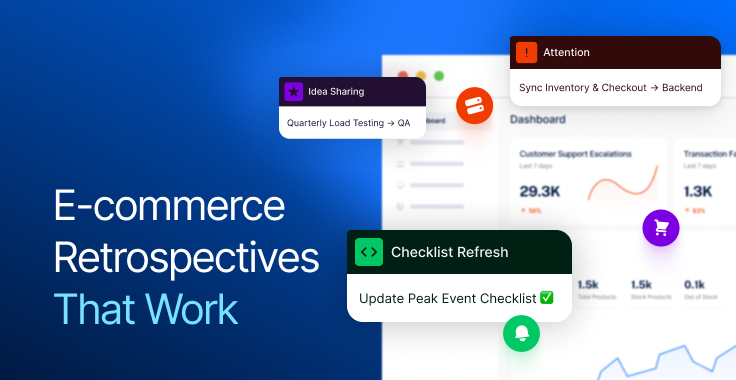Lately, I have received different questions about the Magento 2 Certified Solution Specialist exam so I just thought it might be better to create a single answer in the form of blog post.
This was my 3rd Magento certificate and it was one of the hardest one to prepare for. Could be because of that it was in Beta when I took it.
Anyways, I hope this post will help you prepare and pass the exam.
Exam details
The official Magento website is says the following:
- 75 Multiple Choice items
- 90 minutes to complete the exam
- All questions are valid for Magento Community Edition (2.0.x/2.1.x) and Magento Enterprise Edition (2.0.x/2.1.x) — check if this has changed before taking the exam
- All questions assume the default state of native Magento installations, except where specified in the question
- No hard-copy or online materials may be referenced during the exam
The passing score is not published anywhere as Magento states that it changes time to time. While it is not an official number, 77% is a number I consider a safe passing score (75.5% +/- 1.5%).
What to study for the exam
E-commerce (23%)
For me, this was the easy part. The questions in this section are mostly about general stuff. For example, what is a hosted payment gateway (do you get redirected to a 3rd party website or host it on your own website).
When going for the exam, make sure you know eCommerce and its terms well. If you want to pass the Magento exam just by reading some materials — I am sure you won’t pass. This exam is intended for those who are in touch with eCommerce and Magento on a daily basis.
Some things I was asked about in the Beta exam:
- What is PCI-DSS and why is it needed?
- What is sales tax nexus?
- What are the privacy restrictions in USA, Canada, UK and rest of Europe? Can you store UK customer emails in server located outside UK?
- What is a hosted payment gateway? If you use it — is the customer redirected to a separate payment page hosted by the payment provider?
Magento 2 Architecture (24%)
In this section, prepare for questions about the Magento API, website/store/store-view hierarchy and how to properly use it. If you are familiar with Magento on a daily basis or already Magento 1 Certified — this should not be a problem for you.
For example, for API related questions I recall only 4 (don’t remember them precisely as I took the exam more than 4 months ago). I don’t think there were more API questions in the exam.
- What APIs are available in Magento 2?
- What is Magento Swagger? What does it do?
- What are the possible API response formats?
- What authentication methods are used in Magento 2?
Some other questions from this section I remember:
- Can you set 2 currencies in default Magento 2 within 1 store view?
- What is the proper way to use websites, stores and store views? I was asked a question like “A customer wants to sell in 2 countries — USA and Canada. USA has EN, Canada has EN + FR. What is the correct structure for the setup?”
- What is Magento Cloud and what environments are supported there?
- What is Bluefoot in Magento 2?
- What is Fastly in Magento 2?
- Is SOLR and ElasticSearch available in Magento Open Source?
- What is database sharding in Magento 2? Is it available in Magento Open Source?
- What caching methods does Magento 2 support out of the box?
Features and Functionality (30%)
Before getting certified, make sure you have hands on experience on Magento Open Source (formerly Community Edition) as well as Commerce (formerly Enterprise). If you want to have a hands on experience on Enterprise demo site — shoot me a message and I can help you.
From the feedback I got, many had problems with the M2CSS exam just because they didn’t have knowledge about Magento Commerce.
In preparation, here are some questions that will help you prepare for this section:
- What are the differences between Magento Open Source and Magento Commerce?
- What is content staging? What is it used for and how to navigate to the content staging dashboard? What can you do in the content staging dashboard page?
- What is visual merchandiser in Magento 2? What features does it have? (NOTE: This tool is not available in Open Source version)
- What are the native Magento 2 payment options? Which of these are available only in Magento Commerce?
- What are the native Magento 2 shipping options? Which of these are available only in Magento Commerce?
- What are the tax configurations available in Magento 2? What is FPT?
- What is the difference between Customer Groups and Customer Segments?
- How to use CMS Pages, Widgets, Blocks and Banners?
- What are the minimum attributes you need to fill to create a simple product?
- What is the difference between Shopping Cart Price Rules and Catalog Price Rules?
- What is Magento BI and what integrations (data sources) does it haveout of the box?
Application of Knowledge to Business Goals (23%)
This was the trickiest part of the exam. These questions are not really related to Magento and many of them were brick-and-mortar store questions. As these questions are not really related to Magento itself, I will just give you some general questions you might need in the exam.
- What does SMART stand for?
- What does KPI stand for? Why is it important?
- How to calculate conversion rate for your website?
- What does ERP stand for? Why is it useful?
- What are the differences of brick-and-mortar stores and online stores? While this is a very broad question, there were like 4 or 5 questions about this in the exam. Make sure to read some articles like this.
Study materials
Before you take all the tests — make sure you feel ready and confident. Otherwise, you will learn the answers for certain cases and might end up with shortage of correct questions later. Once you feel ready, practice with the test questions and forms.
Here are some useful links I used before getting certified.
Swift Otter’s Study Guide — one of the most useful guides available. Make sure you not only read it but also understand the things there. Do some extra research about areas you don’t feel confident about.
Magento’s Official Study Guide — to be honest, it has a lot of side-info which is not in the exam at the moment. Anyways, make sure you understand the info written there. Wasn’t the most helpful document for me though.
Demac Media’s Study Guide (PDF, Web)— a lot of this info is covered in the Swift Otter’s Study Guide but still worth having a read.
Marketing terms — submitted by Marco, a reader that passed the exam following the tips of this article.
Test yourself
For your convenience, here are questions I gathered up from different places.
Still need help?
If you still need help preparing for the Magento 2 Certification exam — shoot me a message to arturs@magebit.com. I will try my best to help you.
In case you want me to prepare a bigger group or have some training courses for your company — no worries, at Magebit we also offer that.


















